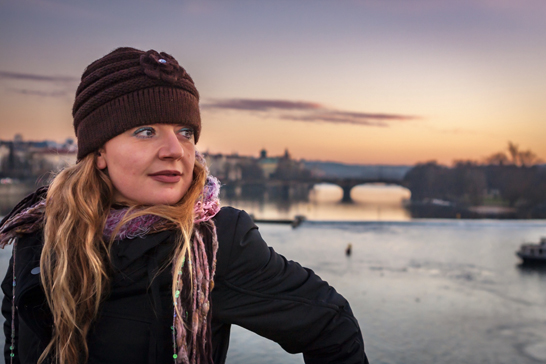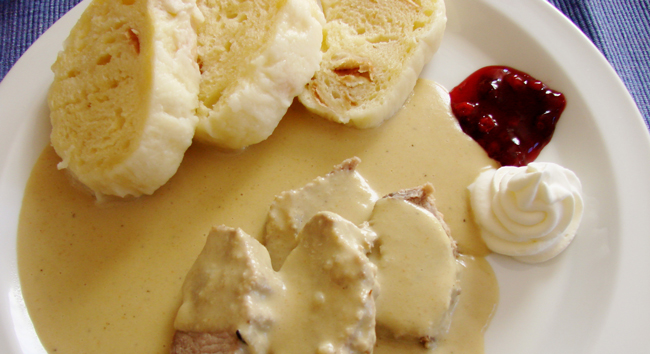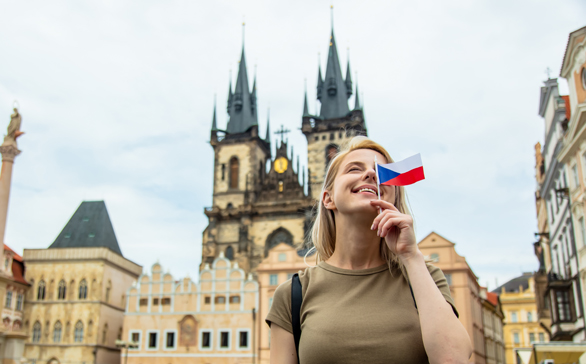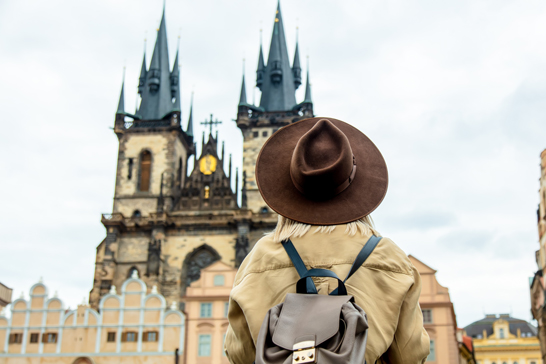Prague, the enchanting capital of the Czech Republic (officially known as Czechia), stands as one of Europe’s most captivating destinations for first-time visitors in 2025. This “City of a Hundred Spires” offers an intoxicating blend of medieval charm, architectural splendor, and vibrant contemporary culture that makes it perfect for an extended two-week exploration.
With tourism experiencing a remarkable renaissance post-pandemic, Prague Czech Republic has emerged as a must-visit destination that combines affordability with world-class experiences. Whether you’re drawn by the fairy-tale architecture, legendary beer culture, or rich historical heritage, Prague offers something extraordinary for every traveler.
Understanding Czechia: Names, History, and Context
Why Is It Called Czechia Now?
The name “Czechia” represents the official short English name for the Czech Republic, adopted in 2016 for international recognition and simplicity. Both “Czech Republic” and “Czechia” are correct, but the shorter form is increasingly used in global contexts, similar to how we say “France” instead of “French Republic.”
The name derives from the Czech people (Češi) and has historical roots dating back to the 19th century. For travelers, this means you’ll see both names used interchangeably on maps, travel guides, and official documents.
Czech Republic vs. Czechoslovakia: What’s the Difference?
Understanding this distinction helps contextualize Prague’s modern identity:
- Czechoslovakia (1918-1993): A country formed after World War I, uniting Czech and Slovak peoples under one nation
- The Velvet Divorce (1993): Czechoslovakia peacefully split into two independent countries
- Today: The Czech Republic (Czechia) and Slovakia are separate nations with distinct cultures and governments
This peaceful separation means Prague today represents purely Czech culture, traditions, and identity—making your cultural immersion more focused and authentic.
Why Prague Should Top Your 2025 Travel List
Architectural Marvel and UNESCO Heritage
Prague’s cityscape reads like a living history book. The city center, designated a UNESCO World Heritage Site, showcases virtually every architectural style from the past millennium:
- Gothic cathedrals piercing the skyline
- Baroque palaces reflecting Habsburg grandeur
- Renaissance buildings displaying Italian influence
- Art Nouveau masterpieces from the early 20th century
- Modernist structures representing contemporary Czech design
The famous moniker “City of a Hundred Spires” actually understates reality—Prague boasts over 500 spires, towers, and domes creating one of Europe’s most photographed skylines.
World-Class Cultural Experiences
Prague Czech Republic offers cultural depth that rivals Paris or Vienna:
- 15 major museums including the National Museum and Mucha Museum
- Dozens of art galleries showcasing both classical and contemporary works
- Opera and concert halls hosting world-renowned performances
- Literary heritage as home to Franz Kafka and Milan Kundera
- Film culture with Prague serving as “Hollywood of the East”
Legendary Beer Culture
Czech Republic leads global beer consumption per capita, and Prague serves as the epicenter of this brewing tradition. The city offers:
- Pilsner Urquell brewery tours and tastings
- Traditional beer halls (hospoda) serving fresh draft beer
- Craft brewery scene with innovative local brewers
- Beer gardens perfect for summer socializing
- Unbeatable prices with quality beer costing less than bottled water
Practical Travel Information for Your Prague Adventure
Is Prague Expensive? Budget Breakdown
Prague remains remarkably affordable compared to Western European capitals, though prices have increased with growing tourism. Here’s what to expect:
Daily Budget Ranges:
- Budget travelers: $50-70/day (hostels, street food, public transport)
- Mid-range visitors: $100-150/day (3-star hotels, restaurant meals, attractions)
- Luxury travelers: $200+/day (5-star hotels, fine dining, private tours)
Is $100 a Day Enough for Prague?
Absolutely! A $100 daily budget comfortably covers:
- Accommodation: Mid-range hotel or quality hostel ($30-50)
- Meals: Local restaurants and café meals ($25-35)
- Transportation: Public transport day passes ($5)
- Attractions: Entry fees to major sites ($15-25)
- Beverages: Local beer and coffee ($10-15)
This budget allows for occasional splurges on fine dining or cultural events while maintaining comfortable standards throughout your stay.
Best Time to Visit Prague
 Spring (April-June): Ideal weather, blooming gardens, moderate crowds
Spring (April-June): Ideal weather, blooming gardens, moderate crowds
- Temperature: 15-20°C (59-68°F)
- Pros: Perfect walking weather, outdoor dining, fair prices
- Cons: Occasional rain showers
Summer (July-August): Peak season with festivals and events
- Temperature: 20-25°C (68-77°F)
- Pros: Long daylight hours, vibrant street life, outdoor concerts
- Cons: Highest prices, largest crowds, hot weather
Autumn (September-October): Outstanding value and comfortable climate
- Temperature: 10-18°C (50-64°F)
- Pros: Gorgeous fall colors, fewer tourists, moderate prices
- Cons: Shorter days, unpredictable weather
Winter (November-March): Magical Christmas markets and lowest prices
- Temperature: 0-5°C (32-41°F)
- Pros: Christmas markets, cozy pub atmosphere, budget-friendly
- Cons: Cold weather, limited daylight, some attractions closed
Essential Prague Itinerary: Must-See Attractions
Week One: Historic Prague Core
Days 1-2: Old Town (Staroměstské náměstí)
- Astronomical Clock: Witness the hourly medieval spectacle
- Týn Church: Gothic architecture masterpiece
- St. Nicholas Church: Baroque interior splendor
- Jewish Quarter: Synagogues and the poignant Old Jewish Cemetery
Days 3-4: Lesser Town (Malá Strana)
- Charles Bridge: Early morning visits avoid crowds
- Prague Castle: Europe’s largest ancient castle complex
- St. Vitus Cathedral: Gothic architectural pinnacle
- Golden Lane: Colorful medieval houses
Days 5-7: New Town and Vyšehrad
- Wenceslas Square: Historic protest site and shopping district
- National Theatre: Neo-Renaissance architectural gem
- Vyšehrad Fortress: Panoramic city views and Czech mythology
- Dancing House: Modern architectural contrast
Week Two: Hidden Gems and Day Trips
Days 8-9: Local Neighborhoods
- Vinohrady: Trendy cafés and local life
- Karlín: Hipster district with craft breweries
- Smíchov: Riverside walks and modern culture
Days 10-14: Unforgettable Day Trips
Kutná Hora (Day Trip): UNESCO World Heritage site featuring the famous Sedlec Ossuary (Bone Church) decorated with human skulls and bones—a haunting yet fascinating medieval memorial.
Český Krumlov (2-day trip): Medieval fairy-tale town with preserved Renaissance architecture and one of Europe’s most beautiful castle complexes.
Karlovy Vary (Day Trip): Elegant spa town famous for hot springs, colorful colonnades, and the annual international film festival.
Karlštejn Castle (Half-day): Gothic castle built by Holy Roman Emperor Charles IV, featuring stunning frescoes and crown jewel chambers.
Czech Cuisine: Culinary Adventures Await
Traditional Czech Dishes You Must Try
 Svíčková na smetaně: The national dish featuring marinated beef sirloin with creamy sauce, bread dumplings, and cranberry sauce. This hearty meal represents Czech comfort food at its finest.
Svíčková na smetaně: The national dish featuring marinated beef sirloin with creamy sauce, bread dumplings, and cranberry sauce. This hearty meal represents Czech comfort food at its finest.
Goulash (Guláš): Rich beef stew with paprika, onions, and vegetables, typically served with bread dumplings. Despite Hungarian origins, Czech goulash has its own distinct preparation style.
Knedlíky: Steamed bread dumplings that accompany most Czech meals. These dense, slice-friendly sides soak up sauces perfectly and represent a cornerstone of Czech cuisine.
Schnitzel (Řízek): Breaded and fried pork or chicken cutlet, similar to Austrian Wiener schnitzel but with Czech variations and seasonings.
Roast Pork with Sauerkraut: Sunday dinner staple featuring tender pork roast with tangy fermented cabbage and dumplings.
Czech Beer Culture: Beyond the Basics
Czech Republic produces some of the world’s finest beers, with brewing traditions dating back over 1,000 years:
- Pilsner Urquell: The original pilsner, created in 1842 in nearby Plzeň
- Budweiser Budvar: The original Budweiser (predating the American version)
- Staropramen: Prague’s hometown brewery
- Craft beer scene: Emerging microbreweries creating innovative flavors
Beer Etiquette Tips:
- Always maintain eye contact when toasting
- Wait for everyone to receive their beer before drinking
- Tip 10% in traditional pubs
- Order by pointing to the tap—language barriers disappear
Modern Dining Scene
Prague’s culinary landscape has evolved dramatically, now featuring:
- Michelin-starred restaurants offering innovative Czech cuisine
- International fusion restaurants blending Czech and global flavors
- Vegetarian and vegan options (Prague ranks among Europe’s most veggie-friendly cities)
- Food markets like Naplavka Farmers Market for local produce
Getting Around Prague: Transportation Guide
Public Transportation Excellence
Prague boasts one of Europe’s most efficient public transport systems:
Metro System: Three lines (A-Green, B-Yellow, C-Red) connecting major districts
- Operating hours: 5:00 AM to midnight (Friday/Saturday until 1:00 AM)
- Frequency: Every 2-3 minutes during peak hours
- Accessibility: Most stations wheelchair accessible
Tram Network: Extensive system covering areas metro doesn’t reach
- Scenic routes: Trams 22 and 23 offer sightseeing opportunities
- Night trams: Service continues after metro closes
- Historic trams: Special tourist trams during summer
Integrated Ticketing: Single tickets work across metro, trams, and buses
- 90-minute ticket: 32 CZK (about $1.40)
- Day pass: 120 CZK (about $5.20)
- Three-day pass: 330 CZK (about $14.50)
Walking and Alternative Transport
Prague’s compact city center makes walking the preferred option for many attractions. The entire UNESCO zone can be explored on foot, though comfortable shoes are essential for cobblestone streets.
Alternative options:
- Bike sharing: Rekola and Nextbike systems available
- Electric scooters: Popular for short distances
- Taxi services: Bolt and Uber operate citywide
- River transport: Seasonal boat services along the Vltava
Accommodation Guide: Where to Stay
 Best Neighborhoods for First-Time Visitors
Best Neighborhoods for First-Time Visitors
Old Town (Staroměstské náměstí)
- Pros: Walking distance to major attractions, historic atmosphere
- Cons: Highest prices, tourist crowds, nighttime noise
- Best for: Luxury travelers, short stays, convenience seekers
Lesser Town (Malá Strana)
- Pros: Quieter than Old Town, beautiful architecture, proximity to castle
- Cons: Limited dining options, steep hills, higher prices
- Best for: Romantic getaways, architecture enthusiasts, peaceful stays
New Town (Nové Město)
- Pros: Good restaurant selection, excellent transport connections, more affordable
- Cons: Less historic character, busy streets, limited major attractions
- Best for: Budget-conscious travelers, business visitors, local experience
Vinohrady
- Pros: Local neighborhood feel, excellent restaurants, reasonable prices
- Cons: Further from main attractions, limited tourist infrastructure
- Best for: Extended stays, cultural immersion, authentic experiences
Accommodation Types and Price Ranges
Luxury Hotels ($200-400/night): Five-star properties in historic buildings Boutique Hotels ($100-200/night): Design-focused accommodations with character Mid-range Hotels ($60-120/night): Comfortable three-star properties Budget Hotels ($30-60/night): Clean, basic accommodations Hostels ($15-30/night): Backpacker-friendly options with social atmosphere Apartments ($50-150/night): Self-catering options for longer stays
Money Matters and Practical Tips
Currency and Payment Methods
Czech Koruna (CZK) remains the official currency, though some tourist areas accept euros at unfavorable exchange rates.
Payment preferences:
- Credit cards: Widely accepted at hotels, restaurants, and shops
- Cash: Preferred at markets, small shops, and traditional pubs
- Contactless payments: Increasingly popular, especially post-pandemic
- ATMs: Abundant throughout the city with reasonable fees
Money-saving tips:
- Use ATMs affiliated with major banks for better exchange rates
- Avoid currency exchange booths in tourist areas
- Negotiate prices at markets and antique shops
- Take advantage of lunch menus at upscale restaurants
Safety and Local Customs
Prague ranks among Europe’s safest capitals, with low violent crime rates and tourist-friendly atmosphere.
Safety considerations:
- Petty theft: Watch for pickpockets in crowded areas and public transport
- Scams: Avoid unlicensed taxi drivers and overpriced tourist restaurants
- Emergency numbers: 112 (general emergency), 158 (police), 155 (medical)
- Tourist police: Specialized units in major tourist areas
Cultural etiquette:
- Dress modestly when visiting churches and religious sites
- Remove shoes when entering Czech homes
- Maintain quiet behavior on public transport
- Tip 10% in restaurants if service charge isn’t included
Shopping and Souvenirs: What to Buy
 Traditional Czech Products
Traditional Czech Products
Bohemian Crystal and Glass: World-renowned for quality and craftsmanship
- Where to buy: Moser, Preciosa, and local artisan shops
- Price range: $20-500 depending on size and complexity
- Tip: Look for “Made in Czech Republic” labels for authenticity
Garnet Jewelry: Czech garnets are prized for their deep red color
- Authentic sources: Granát Turnov shops throughout Prague
- Price range: $50-300 for quality pieces
- Tip: Certificates of authenticity ensure genuine Czech garnets
Traditional Crafts and Textiles
- Marionettes: Hand-carved wooden puppets representing Czech theater tradition
- Lace and embroidery: Intricate handmade textiles from Moravian regions
- Ceramics: Blue and white pottery in traditional patterns
Modern Shopping Districts
Pařížská Street: Luxury international brands and designer boutiques Wenceslas Square: Department stores and mainstream shopping Palladium: Modern shopping center with international chains Local markets: Havelské Tržiště for souvenirs and local products
Seasonal Events and Festivals
Spring Events (April-June)
- Prague Spring International Music Festival: Classical music performances in historic venues
- Prague Food Festival: Celebration of Czech cuisine and international flavors
- Night of Museums: Free or discounted museum admission citywide
Summer Festivals (July-August)
- Prague Castle Concerts: Outdoor classical performances
- Letní Letná: International circus and theater festival
- Prague Shakespeare Festival: English-language performances in gardens
Autumn Celebrations (September-November)
- Prague Wine Festival: Celebration of Moravian wines
- Signal Festival: Light installations throughout the city
- Prague International Film Festival: Showcase of international cinema
Winter Magic (December-February)
- Christmas Markets: Traditional markets in Old Town and Wenceslas Square
- Prague Winter Festival: Classical music concerts in historic venues
- New Year’s Eve: Citywide celebrations with fireworks over the Vltava
Czechoslovakia was a unified country from 1918-1993 that included both Czech and Slovak peoples. In 1993, it peacefully split into two independent nations: the Czech Republic (now also called Czechia) and Slovakia.
Absolutely! Prague offers numerous family-friendly attractions including Prague Castle, the Astronomical Clock, boat trips on the Vltava River, and the Prague Zoo. The city’s compact size and excellent public transport make it easy to navigate with children.
While major highlights can be seen in 3-4 days, two weeks allows for thorough exploration of the city plus day trips to surrounding attractions. This extended timeframe lets you experience Prague like a local rather than just a tourist.
English is commonly spoken in tourist areas, hotels, and restaurants, especially among younger Czechs. However, learning basic Czech phrases like “děkuji” (thank you) and “prosím” (please) is appreciated by locals.
Pack comfortable walking shoes for cobblestone streets, layered clothing for variable weather, and a light rain jacket. Dress codes are generally casual, but smart-casual attire is recommended for upscale restaurants and cultural events.
Credit cards are widely accepted at hotels, restaurants, and shops, but many traditional pubs, markets, and smaller establishments prefer cash. It’s advisable to carry some Czech koruna for these situations.
Like this post? Be sure to check out Life in Norway.
Prague Czech Republic offers an unparalleled combination of historical grandeur, cultural richness, and modern vitality that makes it perfect for an extended two-week exploration. From the medieval splendor of Prague Castle to the vibrant contemporary art scene in Karlín, from traditional beer halls serving centuries-old recipes to innovative restaurants earning Michelin recognition, Prague delivers experiences that satisfy every type of traveler.
The city’s remarkable affordability compared to other European capitals, combined with its compact size and excellent infrastructure, makes it particularly welcoming for first-time visitors. Whether you’re drawn by the architectural wonders, the legendary beer culture, the rich history, or simply the magical atmosphere that permeates every cobblestone street, Prague will exceed your expectations.
Ready to start planning your Prague adventure? Begin by booking your accommodation in advance, especially if visiting during peak seasons. Research current flight deals, download offline maps, and start learning basic Czech phrases. Most importantly, leave room in your itinerary for spontaneous discoveries—Prague’s greatest treasures are often found by wandering its enchanting streets with curiosity and wonder.
Your two weeks in Prague await, promising memories that will last a lifetime and a deep appreciation for one of Europe’s most captivating capitals.


